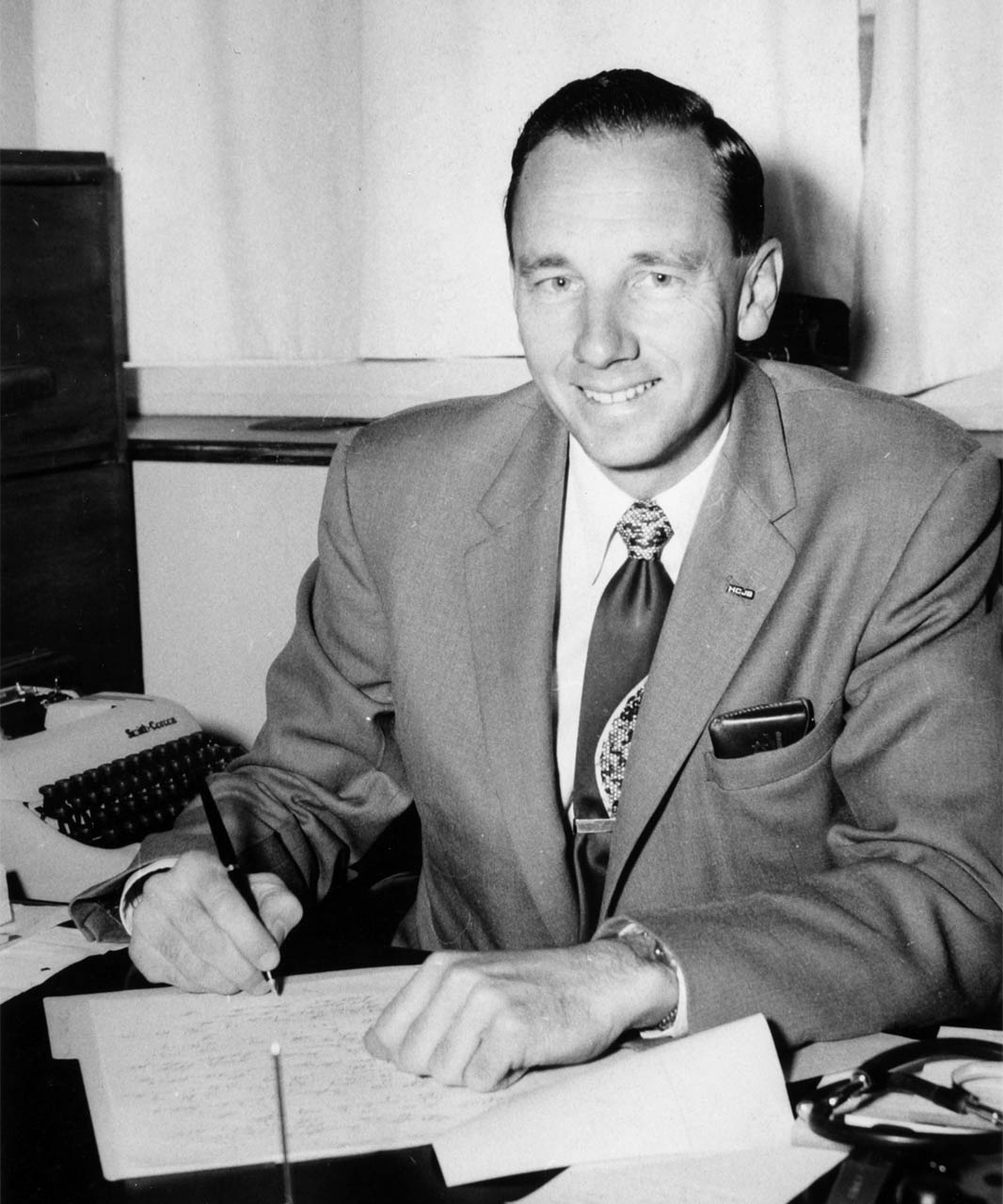
Dr. Paul Roberts, a Canadian physician who envisioned and helped establish a mission hospital in Ecuador, died in Toronto on Nov. 22, 2020. He was 97.
His commitment to mission work took root in the 1940s when he was a student at the University of Toronto Medical School in Canada. Robert O. (Bob) Stephens invited him to InterVarsity Christian Fellowship where, according to Roberts, “the Meds group was booming.” The two had been friends since their early teens. Together with another student, Bob Foster, they formed a “meds gospel team”. Musically gifted (Roberts-trumpet, Stephens-piano, Foster-vocal) the trio set out to tell others of salvation in Christ and recruit for medical mission work. “Many weekends we were out somewhere in southern Ontario, in churches and youth rallies, playing and giving our testimonies.”
“It was a milestone in our lives together,” Stephens said. “We printed up little [business] cards and went into churches and it just took off. Churches were at a renaissance after the war, with a lot of activity and little or no competition from TV; people went to church in the evening.”
Seventy-five years later Stephens still recalls when Roberts began a relationship with Ecuador. “We met at a Baptist church and he spoke from the platform, saying that he had decided to go to the mission field and was thinking about going there [to Ecuador]. Stephens went on to establish a hospital in the Belgian Congo; Foster founded and directed two hospitals in Zambia, later directing a hospital in Angola.
Roberts had met and was invited by Clarence Jones and Reuben Larson, then co-directors of missionary radio station HCJB “The Voice of the Andes”. They had asked him to join their organization, known today as Reach Beyond.
“They said they needed a doctor in Ecuador to establish a missionary clinic,” Roberts recounted decades later. “I think they then had 30 missionaries, ‘and boy! We need a doctor for 30 missionaries!’” Jones’ letter to mission trustees laid out the need for medical staff for the HCJB family, both national and foreign, as well as personnel to travel with the mission’s evangelistic staff to offer medical care in surrounding areas.
“My father would not be deterred.”
For his part, Roberts expressed his interest in practicing medicine in Ecuador, but learned from a fellow Canadian there that Ecuador was not anxious to have foreign doctors. This may have put off many 23-year-old medical students, but not Roberts. Born on March 20, 1923, to missionary parents in London, England, he had spent his first several years in India. There, in the country’s northeast, his father, Watkin Robert Roberts, felt that God had called him to reach a tribe of headhunters, the Hmar.
When local officials refused the elder Roberts’ request, “my father would not be deterred,” Roberts wrote in his 2007 memoir, The Ride of Our Lives! A two-week trek took Roberts to a small village (which he called Senvon) and “there Dad told the story of Jesus and His love. Five young men responded and the church among the Hmar people was born.”
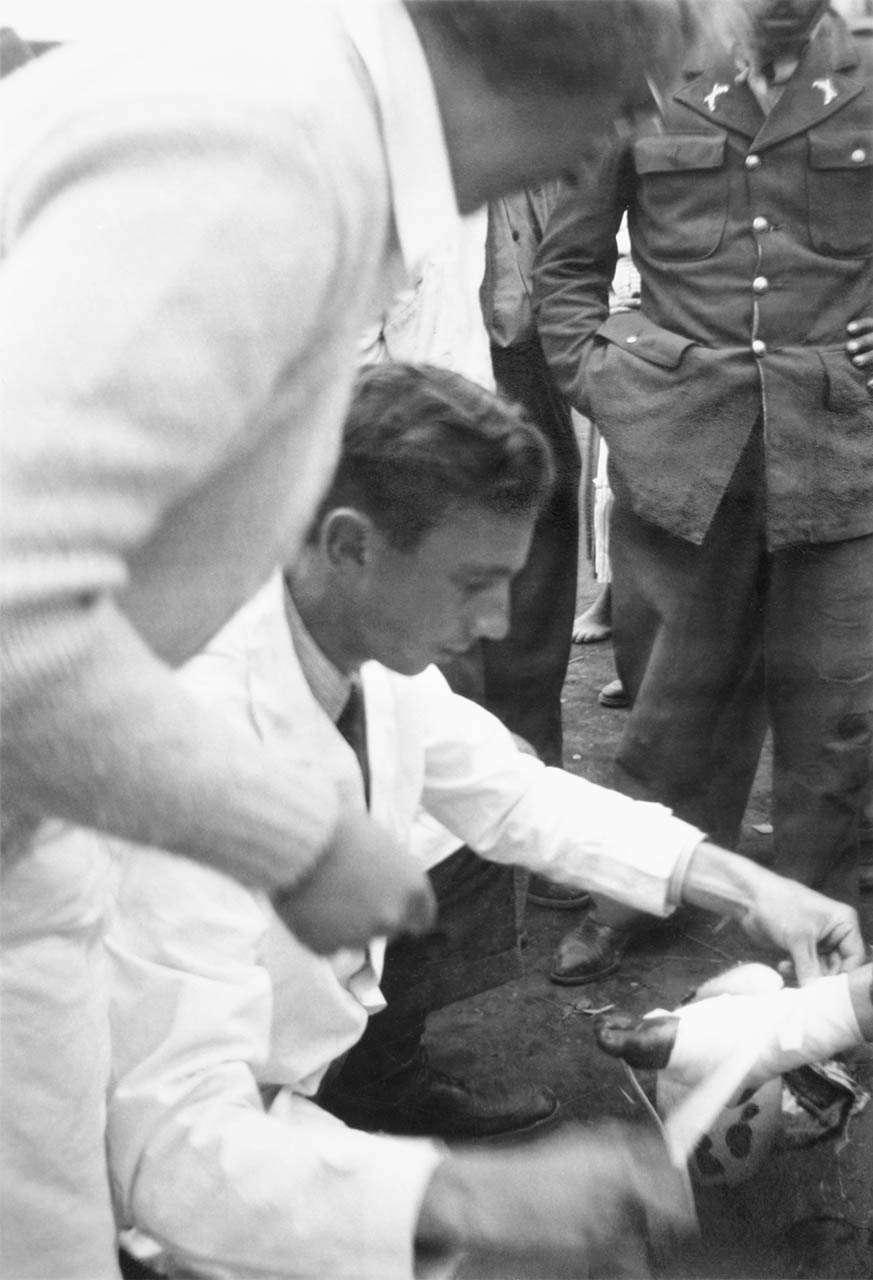 |
Eventually the family moved to Toronto where his father re-entered work in business. At age 17, Paul Roberts surrendered his life to Jesus Christ and was baptized at Muskoka Bible Camp. Then came university, medical school and marriage. He brought his new bride, Barbara (Cullen) Roberts, to Ecuador in April 1949, arriving as the country’s first evangelical medical missionaries.
On August 5, 1949 a devastating earthquake struck the Andean country. Some 5,000 people died and thousands more lost homes, land, livestock and livelihoods. Roberts and the mission’s medical staff accompanied an HCJB mobile broadcast crew, including missionary Clayton Howard, to Ambato south of Quito. Howard wrote to U.S.-based relatives that in the nearby town of Bolívar, Roberts, “spoke to a man who had lost his home, family, fields, etc.” There in Ecuador’s central highlands at altitudes above 8,000 feet (more than 2,400 meters) Roberts also treated survivors for exposure.
He and the team found Huambaló inaccessible. He later accompanied Ecuadorian troops to Pelileo, observing that “the silence of death was everywhere. Only an occasional surviving dog barked.”
“I don’t remember finding a single survivor,” Roberts recalled in his memoir, “although I do remember carrying a body out of the rubble on a door that we used as a makeshift stretcher for the dead.” Amid such a beginning, a nascent love for Ecuador budded. In the decades that followed, it grew, as did Roberts’ profile and professional wherewithal to alleviate suffering.
 Medicine, The Magnet
Medicine, The Magnet
Care of missionary families and HCJB’s Ecuadorian staff began in a house that served as a clinic downstairs, with the Roberts’ home upstairs. Funding—raised in Philadelphia by “Morning Cheer,” a Christian radio program—went toward establishing the Albergue y Dispensario Indígena (Indigenous Hostel and Dispensary). The small facility in Ecuador’s capital city, Quito, opened on April 28, 1950.
Roberts recounts that a 4-year-old with tracheitis and severe laryngitis was brought to him. “His air passages were so swollen by the infection that he was literally smothering to death,” he wrote in 1955 in Medicine, The Magnet. Roberts encountered problem after problem—a search for thin plastic tubes called cannulas, an operating room not prepped (at a hospital in Quito) and a scramble for an oxygen tank.
“Just as I was about to begin the operation, the boy stopped breathing,” Roberts said. “I lifted a prayer to my faithful Father, and went on. No pulse could be felt, but I inserted the tube and began artificial respiration. We worked for 20 minutes, and then the lad gave a gasp and tried to breathe. I think that was one of the greatest thrills of my life!”
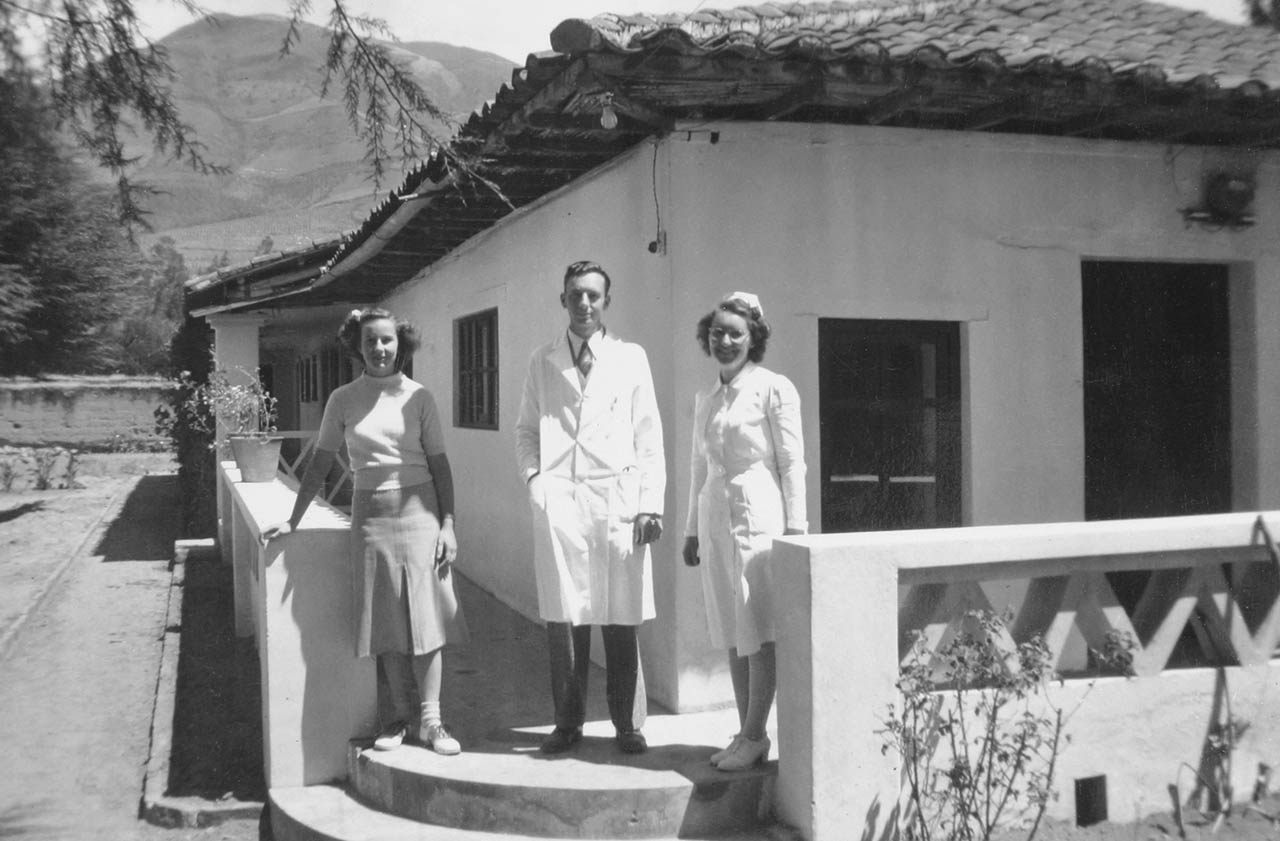 |
Situated on the Pan American highway, the clinic for indigenous fulfilled Jones’ directive for outreach. Roberts however, envisioned something bigger—a full-service hospital where Ecuadorians would receive care regardless of their ability to pay. He also foresaw the mission playing role in providing medical education for Ecuadorians.
Medical responsibilities kept Roberts busy in Quito, but at times he was off in the Ecuadorian rainforest. Trekking several hours through the jungle, he and others found “20 or more people were waiting for the doctor. The jungle telegraph had told them we were coming.”
“It was so late we all crowded into the large oval chonta palm hut for the night,” Roberts continued. “I didn’t get much sleep because many were coughing, possibly with tuberculosis.” Other responsibilities faced him, including medical certification in Ecuador so that his work no longer need be vetted by a national physician. In this, he proposed a thesis, Penicillin in the Treatment of Pinta, and was approved to conduct research. Pinta (also called the blue disease) causes patches of decreased or increased pigmentation in the skin. It is caused by a spirochaete that is identical to the one that causes syphilis, yaws and bejel. Conventional treatment had been with Mapharsen, but his study found penicillin equally or more effective, safer and more easily administered.
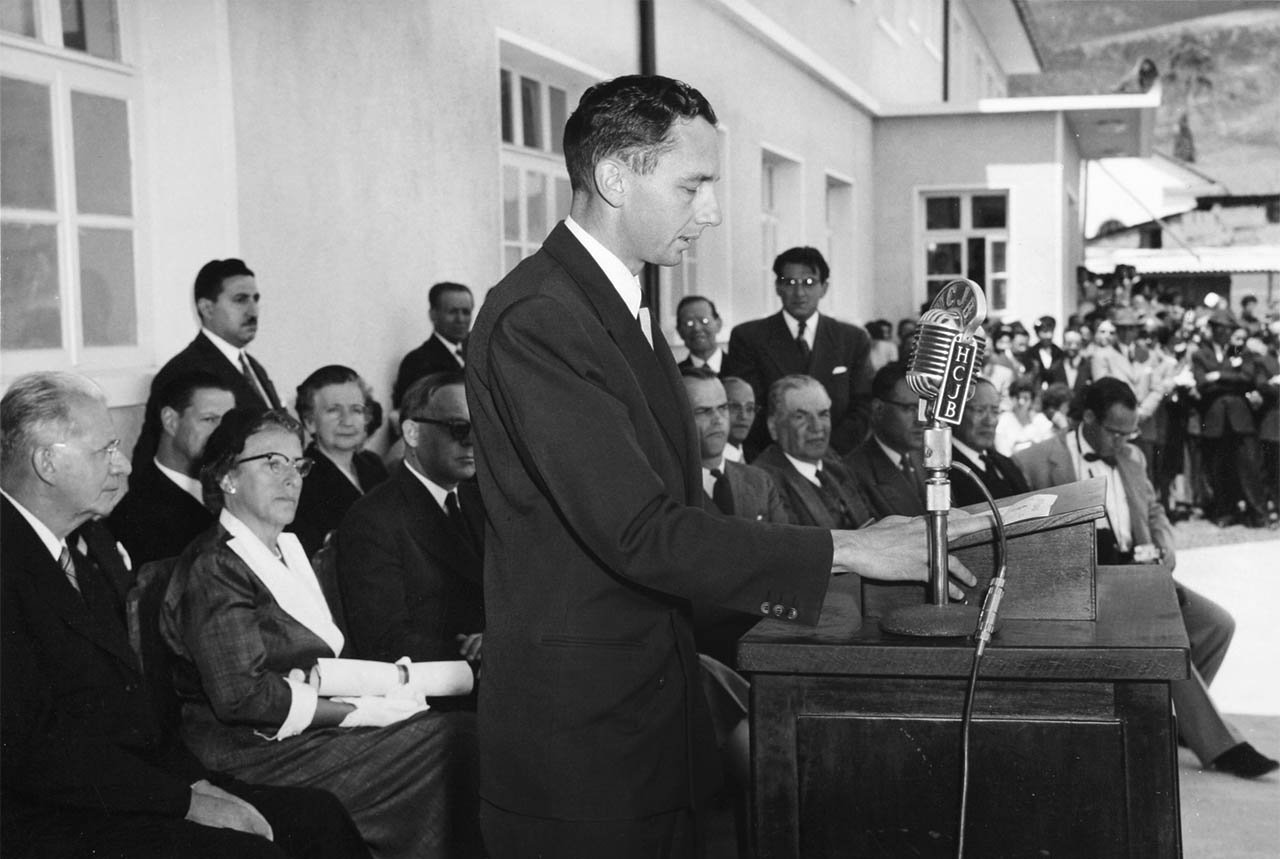 |
“Morning Cheer” and the Beginnings of Hospital Vozandes Quito
In 1952 Roberts, along with “Morning Cheer” director, George Palmer, began raising funds for what would become Rimmer Memorial Hospital (Hospital Vozandes or HVQ). Roberts recounted miracle after miracle in how God provided funding and equipment for the hospital which opened on October 12, 1955. “He always wore a suit and his demeanor was professional, courteous,” said Ian Leaver, who retired as Reach Beyond Canada director and now serves as CEO of SonSet Solutions Canada. “He had the ability to convince his audience.” Roberts made annual trips to Philadelphia to speak on “Morning Cheer” that cleared deficits on the hospital’s books from treating patients who were unable to pay for care.
In 1960 the Robertses returned to Canada, where Paul got a job as a physician with Crown Life Canada and his family began attending a small church. Soon he was asked to chair the fundraising committee to construct a bigger building. In 1961 he also joined the Boards of Directors of Christian Children’s Fund Canada and another group, Christian Horizons. He also joined the missions arm of the Christian Medical and Dental Society Canada.
A few years later, Ecuador’s ambassador to Canada requested that Roberts serve as Honorary Consul of Ecuador in Toronto. “I was delighted to renew contact with the little country I had come to love,” Roberts recalled. Paul was eventually given full Ecuadorian citizenship and was honored with receiving an Ecuadorian Passport #001.
He later set up private practice and then became a founding member of the Family and Community Medicine unit at Sunnybrook Hospital in Toronto.
“To be on staff in a university hospital meant that the physician had to have a teaching appointment at the University of Toronto,” Roberts said. He began as a lecturer and worked his way up to professor in the medical school. During a sabbatical, he and Barbara spent several months in an underserved area north of Lake Superior. Realizing that academia had blunted his minor surgical skills, he set about putting together a procedures book. His colleagues were persuaded to submit a chapter each. “These were all compiled along with a profusion of illustrations into a 600-page book published in 1986, called Useful Procedures in Medical Practice.
A Warm Welcome Back to Ecuador
Some 12 years after their departure from Ecuador, the Robertses had occasion to return. Roberts—invited by Ecuadorian physicians he’d met at an international conference—told of “a huge crowd [that] awaited us at Quito airport. Many were national friends along with many, many missionaries. It was wonderful to be so warmly welcomed.” He introduced family practice medicine to Central University in Quito, but it was not adopted at that time. HVQ later played a role in introducing the family practice specialty of medicine in the country in coordination with the Catholic University in Cuenca.
Months later he visited the country again, this time with other Canadian doctors, to give a refresher course to members of the Ecuadorian Orthopedic and Trauma Society. It was the first of many such trips that shared Canadian medical professors’ skills with Ecuadorians.
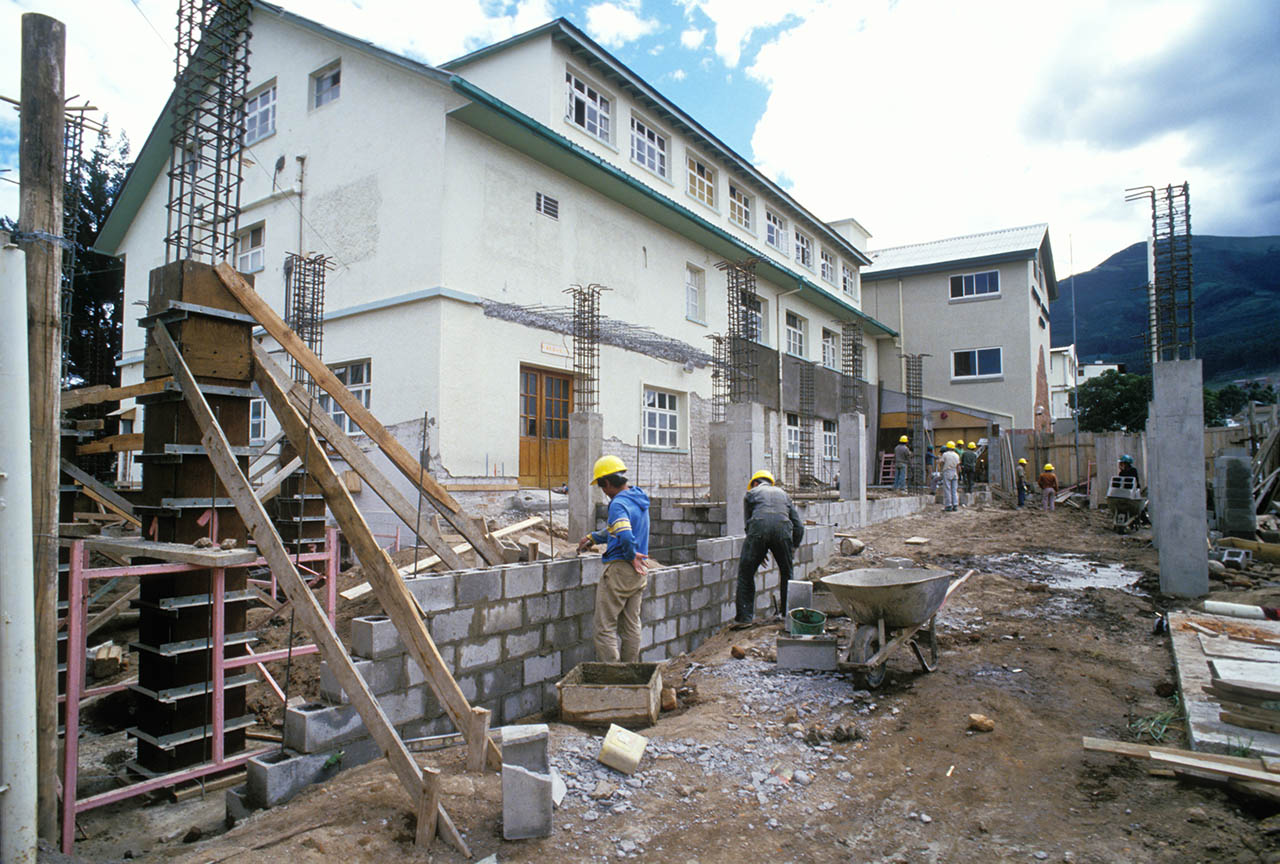 |
In the early 1990s, Reach Beyond invited Roberts to serve as Honorary Chair of Project Life, a $3.2 campaign to enlarge and modernize HVQ.
Roberts characterized his role as that of a figurehead, with Reach Beyond’s Susan Olsen continuing the course of the day-to-day work. “However, by the grace of God,” Roberts said, “I was personally able to raise several hundred thousand dollars from personal contacts in both Canada and the United States.”
The Friends of Ecuador Committee is Formed
In response to an appeal from Ecuador to get food and supplies to Ecuador after late-1990s devastation from El Niño flooding, Roberts and others established a foundation, the Friends of Ecuador Committee. The group has shipped dozens of maritime containers to Ecuador.
Barbara Roberts died on August 12, 2008, followed by a huge outpouring of memorial gift money. “God led me to invest those monies in a lasting memorial to God’s great faithfulness and lovingkindness,” Roberts said, adding that he helped dedicate an HVQ chapel in her name in early 2009.
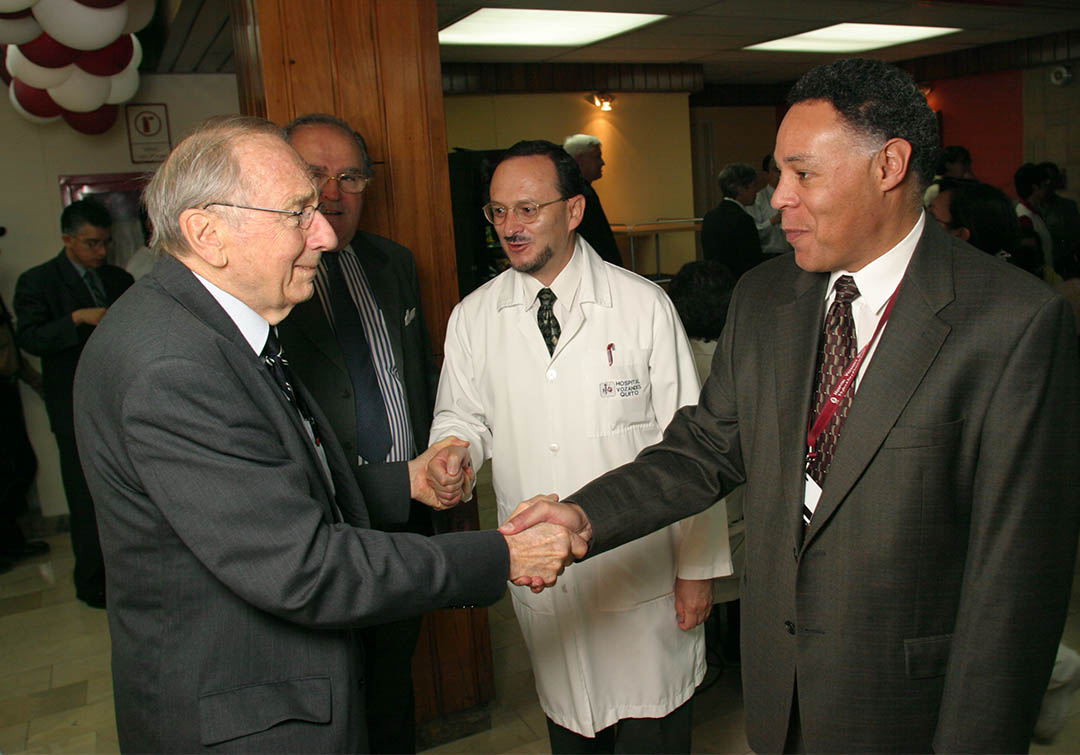 |
“He came to visit the hospital while he was in his 80s,” said Graham Bulmer, a former director of Reach Beyond’s Latin America Region that is based in Quito. “We were having one of the elevators serviced so there was a long wait of patients to get up to the Consulta Externa (Outpatient Services) on the second floor.
“Dr. Roberts said, ‘No problem, we'll take the stairs.’ He had just come from Toronto—a few hundred feet above sea level to Quito [at] almost 10 000 feet. And up the stairs we went! At the top he smiled, and said, ‘Well, I made it. Not sure I want to do that again too soon.’’’ In December 2009 Roberts, then 86, married Lois Neely, 84, whom he and Barbara had known since university days in Toronto.
A Friend of Ecuador till the end
Just as Hospital Vozandes had been dedicated “to the Glory of God and the Service of Ecuador,” Roberts’ embrace, commitment and love of Ecuador never wavered. Even while under hospice care in Toronto, Paul continued seeing to aspects of getting shipments to Ecuador. To the end he remained a friend of Ecuador.
*Read Dr. Paul Roberts’ obituary at: https://www.dignitymemorial.com/en-ca/obituaries/thornhill-on/dr-paul-roberts-9913265
